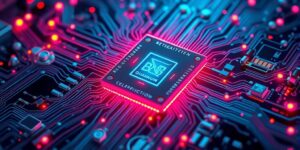When Wi-Fi Was a Luxury: How IoT Became Universal
Remember dial-up? Remember the agonizing wait for a webpage to load? For many of us, those days feel like a lifetime ago. But that’s the reality of how far technology has advanced, especially in the field of internet connectivity. This journey from the luxury of Wi-Fi to the ubiquity of the Internet of Things (IoT) is a fascinating story of innovation, accessibility, and the ever-expanding digital world. Let’s dive in and uncover how this technological revolution unfolded!
From Scarcity to Ubiquity: The Rise of IoT
The evolution of internet access is nothing short of remarkable. Think about it: once, simply connecting to the internet was a time-consuming and often frustrating process. Now, we’re surrounded by a world of devices constantly communicating with each other – the very definition of the Internet of Things (IoT). But how did we get here? The journey begins with the initial limitations and challenges of early internet technologies. The early days of the internet were exclusively a desktop experience, requiring physical connections and specific hardware. This access was extremely limited, making it a privilege for a select few, primarily in business and research fields. Wi-Fi’s introduction marked a significant shift. Suddenly, the internet wasn’t tethered to a physical location. It was portable and readily available, paving the way for wider adoption.
Early Days of Wi-Fi and its Limitations
Even with the advent of Wi-Fi, access wasn’t universal. Initial Wi-Fi networks were often slow, with limited range and bandwidth. The costs were also prohibitive for many, restricting widespread adoption. The transition to the ubiquitous wireless world we know today required significant advances in technology, including improvements in router technology, more efficient wireless standards (like 802.11n and 802.11ac), and decreased manufacturing costs.
The Catalyst for Change: Smartphone Technology
The rise of smartphones acted as a catalyst, propelling the IoT revolution forward. These pocket-sized computers provided seamless internet access to individuals on a global scale. The increased processing power, coupled with the ability to connect to mobile networks, created an ecosystem primed for the development and implementation of internet-connected devices. The smartphone’s portability also allowed for the development of mobile applications that could interact with various IoT devices. The ability to control your home appliances remotely or monitor your health using wearables became a reality. It was a true game-changer that made the internet accessible to billions.
The Role of Mobile Networks in Expanding IoT Reach
Mobile networks played a crucial role in the widespread accessibility of the internet and the proliferation of IoT devices. While Wi-Fi offered wireless access, its reach was limited to specific locations. Cellular networks, on the other hand, offered broader coverage, connecting users in previously unreachable areas. This extended range enabled the connection of various devices, such as smartwatches, fitness trackers, and location-based services, adding to the expanding ecosystem of the Internet of Things. This expansion also led to the development of new applications in various fields, such as agriculture, healthcare, and transportation, enhancing efficiency and improving people’s lives.
The IoT Revolution: Impact and Future Trends
The rise of IoT has been nothing short of transformative. From smart homes and wearables to interconnected transportation and industrial automation, the impact is undeniable. The world is becoming more connected and efficient through this expanding network of devices. Think of the implications in healthcare, where remote patient monitoring systems reduce hospital readmissions; or in agriculture, where smart irrigation systems optimize water usage and improve crop yields. The future holds immense potential.
The Expanding Horizons of the Internet of Things
The future of IoT promises even more integration and innovation. We can anticipate the growth of edge computing, bringing data processing closer to the devices themselves. This will enhance speed and reduce latency, leading to a more responsive and efficient IoT infrastructure. Artificial intelligence (AI) and machine learning (ML) will also play pivotal roles, enhancing device intelligence and allowing them to learn and adapt based on user behavior and data analysis. The integration of blockchain technology also holds exciting possibilities for ensuring data security and privacy within this interconnected network.
Conclusion: Embracing a Hyper-Connected World
The journey from the luxury of Wi-Fi to the ubiquity of IoT is a testament to human ingenuity and technological progress. This incredible transformation has changed how we live, work, and interact with the world around us. The future of the IoT is bright, full of possibilities to make our world safer, smarter, and more efficient. Let’s embrace this ever-evolving hyper-connected world and explore the amazing potential it holds. What innovative applications of IoT are you most excited about? Share your thoughts below!













